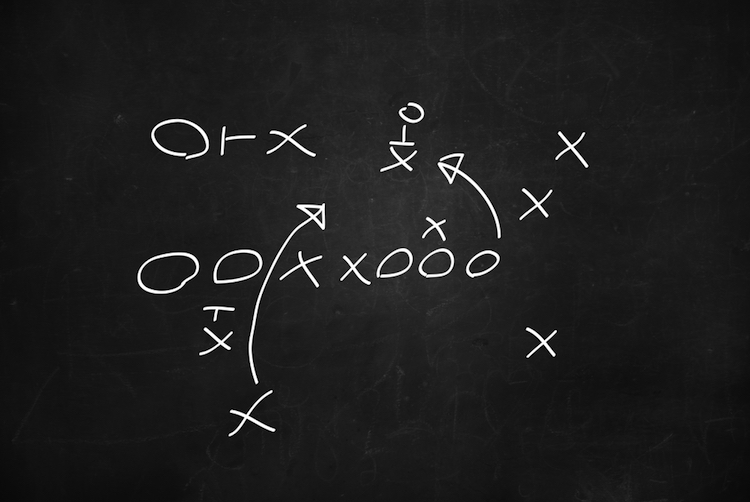Four Complexities of a Modern Sports Playbook
Up until the 1970s or so, NFL playbooks were rather straightforward tomes. That decade, offenses began to change, moving away from the base sets that were so readily familiar as X’s and O’s, to the complex schemes that used multiple receivers, zone blocking, and a de-emphasis on the fullback. Defenses evolved as well, with more nickel and dime packages and elaborate blitzes.
The NFL isn’t the only area in which sports playbooks became more complex over the past few decades. College football programs are adopting systems as deep as their pro counterparts. Basketball teams now run offenses and defenses that would make James Naismith’s head spin. Hockey and soccer playbooks have evolved, too. Increasingly, teams are turning to mobile playbook and video software to address and assist in streamlining these complexities. Here are four of those complexities:
1. The intricacies of one play
The days of one play being run just one way have long passed. “Three yards and cloud of dust” yields fewer than three yards if the defense knows what to expect every time. Today’s sports playbooks can offer dozens of variations on just one play. Most NFL quarterbacks aren’t calling their own plays, but they do have the green light to audible depending on what they see at the line. The offense must know every variation—every adjustment, every leg kick, every “Omaha”—in order for the play to be successful. Tablet-based playbooks can help organize, explain, and update these detailed plays so routes and blocking assignments aren’t missed.
2. The overall depth of a playbook
Besides getting more intricate, sports playbooks are deeper than ever, with possibly hundreds of options available on offense and defense. Those wristbands that quarterbacks wear with plays listed aren’t a slam against the QB’s memory, but rather a reminder how much there is to remember. Mobile playbooks offer an excellent vehicle to keep track of so many plays, which can be easily—and remotely—added, updated, or removed.
3. A vast amount of data
As sports playbooks have become more complex, the data that drives teams’ strategies have become more complex as well. Plays are analyzed and measured for their effectiveness; video of every moment of games and practices are integral to how teams plan. Furthermore, video and metrics for other teams are readily available. All this data is great for coaching staffs, players, general managers, and video coordinators, but without a comprehensive playbook solution, it can overwhelm even the most organized teams.
4. The importance of scouting
With so much raw game data, advanced metrics, and video from multiple angles available, effective scouting and game preparation has taken on greater urgency. This has always been the case with football, but it’s now as important in other sports—consider the infield shifts that are so common today but were practically unheard of a decade ago. Today’s sports playbooks should incorporate video—either to attach to an existing play to see how it might work against a certain opponent, or as game film to be viewed by players and coaches in preparation for game day.
What aspect of modern sports playbooks do you find most challenging to manage?





